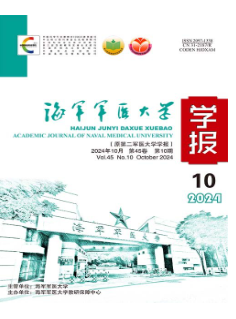糖皮质激素联合大剂量静脉注射免疫球蛋白治疗2019年重症冠状病毒病成功一例报告及临床经验分析
Q4 Medicine
引用次数: 1
摘要
目的报告1例重症冠状病毒病(COVID-19)经糖皮质激素和静脉注射免疫球蛋白治疗成功的病例。方法与结果患者为武汉市一名医疗服务人员,发病前一直在照顾COVID-19患者。他于2020年1月16日开始咳嗽,痰中有少许白色粘稠,入院前1月22日发烧(高达38.5℃)。CT示双肺轻度渗出。口服奥司他韦,静脉注射莫西沙星、头孢哌酮和舒巴坦钠,并给予营养支持。1月26日,患者出现胸闷、呼吸短促。拭子检测SARS-CoV-2核酸阳性,胸部CT示双肺中度渗出。1月28日,呼吸急促加重,静脉注射甲强的松龙(40 mg, qd)和免疫球蛋白(10 g, qd)。1月30日呼吸急促加重,体温40.7℃,脉搏血氧饱和度(SpO2) 83%,吸氧10 L/min,淋巴细胞计数0.5×109/L。甲基强的松龙和免疫球蛋白的剂量分别调整为40mg, q12h和20g, qd。皮下注射胸腺甲素(1.6 mg, qd)。随后体温恢复正常,胸闷、呼吸短促等症状逐渐好转。1月31日,SpO2 88%,吸氧10l /min,胸部CT示双肺大量渗出。2月2日,以5l /min吸氧,SpO2为95%,随后逐渐减少甲泼尼龙剂量。2月3日胸部CT结果显示肺部炎症好转,2月4日和9日咽拭子检测SARS-CoV-2核酸阴性。结论早期和轻度COVID-19患者应慎用糖皮质激素。然而,适当剂量的糖皮质激素可用于调节失代偿性呼吸衰竭患者的肺部炎症。此外,必要时可给予大剂量免疫球蛋白。本文章由计算机程序翻译,如有差异,请以英文原文为准。
Severe Coronavirus disease 2019 successfully treated with glucocorticoid and high-dose intravenous immunoglobulin: A case report and analysis of clinical experience
Objective To report a case of severe Coronavirus disease 2019 (COVID-19) that had been successfully treated with glucocorticoid and intravenous immunoglobulin therapy. Methods and results The patient was a healthcare provider in Wuhan City who was taking care of COVID-19 patients before the onset of the disease. He started to cough with a little white sticky sputum on January 16, 2020 and had a fever on January 22 (up to 38.5 ℃) before admission. CT results showed mild exudation in both lungs. Oral oseltamivir and intravenous moxifloxacin, cefoperazone and sulbactam sodium were given in addition to nutritional support. On January 26, the patient had chest tightness and shortness of breath. A swab test was positive for severe acute respiratory syndrome Coronavirus 2 (SARS-CoV-2) nucleic acid, and chest CT results showed moderate exudation in both lungs. On January 28, shortness of breath worsened and intravenous methylprednisolone (40 mg, qd) and immunoglobulin (10 g, qd) were given. On January 30, shortness of breath further worsened;he had a body temperature of 40.7 ℃, pulse oxygen saturation (SpO2) of 83% with oxygen inhalation at 10 L/min, and lymphocyte count of 0.5×109/L. The dose of methylprednisolone and immunoglobulin were adjusted to 40 mg, q12h and 20 g, qd, respectively. Subcutaneous injection of thymalfasin (1.6 mg, qd) was added. Then the body temperature returned to normal, and symptoms such as chest tightness and shortness of breath were gradually improved. On January 31, SpO2 was 88% with oxygen inhalation at 10 L/min and a chest CT results revealed large amount of exudation in both lungs. On February 2, SpO2 was 95% with oxygen inhalation at 5 L/min and the dose of methylprednisolone was then gradually reduced. A chest CT results on February 3 revealed improved lung inflammation, and a throat swab on February 4 and 9 was negative for SARS-CoV-2 nucleic acid. Conclusion Glucocorticoid should be used with caution in patients with early and mild COVID-19. However, appropriate dosage of glucocorticoid can be used to modulate lung inflammation in patients with decompensated respiratory failure. Additionally, large dose of immunoglobulin can be given if necessary.
求助全文
通过发布文献求助,成功后即可免费获取论文全文。
去求助
来源期刊

海军军医大学学报
Medicine-Medicine (all)
CiteScore
0.50
自引率
0.00%
发文量
14752
期刊介绍:
Founded in 1980, Academic Journal of Second Military Medical University(AJSMMU) is sponsored by Second Military Medical University, a well-known medical university in China. AJSMMU is a peer-reviewed biomedical journal,published in Chinese with English abstracts.The journal aims to showcase outstanding research articles from all areas of biology and medicine,including basic medicine(such as biochemistry, microbiology, molecular biology, genetics, etc.),clinical medicine,public health and epidemiology, military medicine,pharmacology and Traditional Chinese Medicine),to publish significant case report, and to provide both perspectives on personal experiences in medicine and reviews of the current state of biology and medicine.
 求助内容:
求助内容: 应助结果提醒方式:
应助结果提醒方式:


